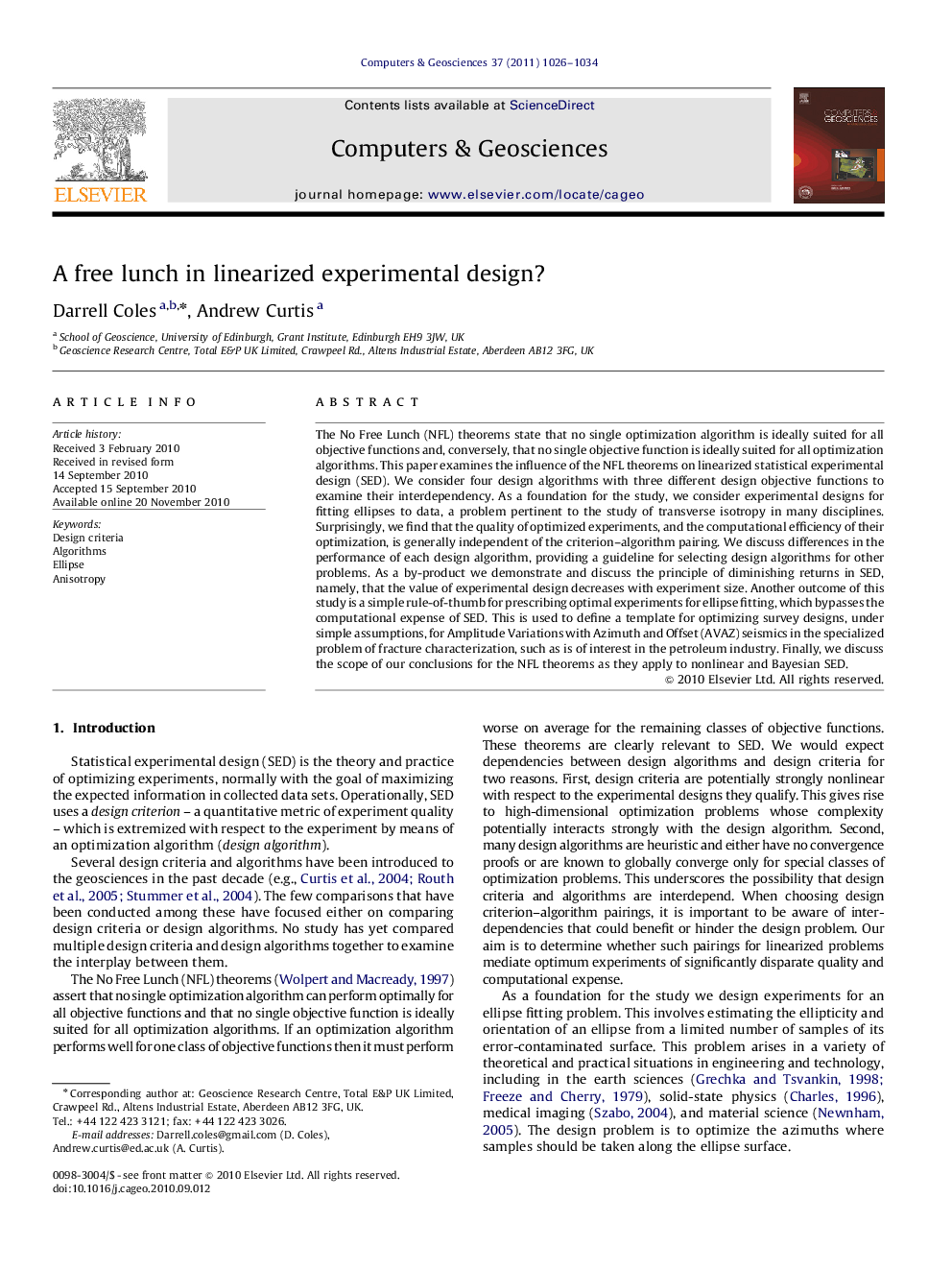| کد مقاله | کد نشریه | سال انتشار | مقاله انگلیسی | نسخه تمام متن |
|---|---|---|---|---|
| 506869 | 865061 | 2011 | 9 صفحه PDF | دانلود رایگان |

The No Free Lunch (NFL) theorems state that no single optimization algorithm is ideally suited for all objective functions and, conversely, that no single objective function is ideally suited for all optimization algorithms. This paper examines the influence of the NFL theorems on linearized statistical experimental design (SED). We consider four design algorithms with three different design objective functions to examine their interdependency. As a foundation for the study, we consider experimental designs for fitting ellipses to data, a problem pertinent to the study of transverse isotropy in many disciplines. Surprisingly, we find that the quality of optimized experiments, and the computational efficiency of their optimization, is generally independent of the criterion–algorithm pairing. We discuss differences in the performance of each design algorithm, providing a guideline for selecting design algorithms for other problems. As a by-product we demonstrate and discuss the principle of diminishing returns in SED, namely, that the value of experimental design decreases with experiment size. Another outcome of this study is a simple rule-of-thumb for prescribing optimal experiments for ellipse fitting, which bypasses the computational expense of SED. This is used to define a template for optimizing survey designs, under simple assumptions, for Amplitude Variations with Azimuth and Offset (AVAZ) seismics in the specialized problem of fracture characterization, such as is of interest in the petroleum industry. Finally, we discuss the scope of our conclusions for the NFL theorems as they apply to nonlinear and Bayesian SED.
Journal: Computers & Geosciences - Volume 37, Issue 8, August 2011, Pages 1026–1034